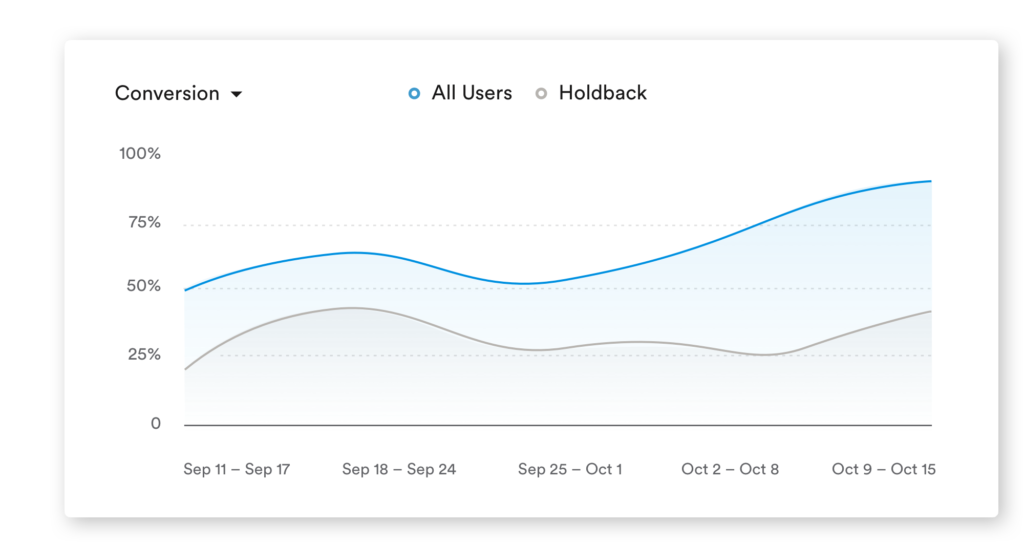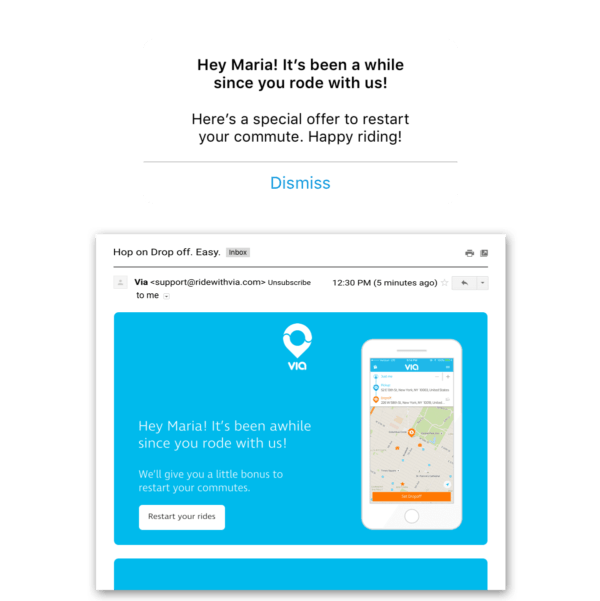Churn is the all-too-familiar term applied to customers who abandon a business and move on. When a customer cuts ties with a product that they were using, e.g., by cancelling a monthly subscription, we say that they “churned.” This isn’t limited to paying customers. If a person stops using a social media platform or an email client, they still churn in the eyes of the business.
Businesses try to minimize churn at all costs. This is critical because the cost of new user acquisition is infamously high. We studied this in 2018, and while the average cost to acquire a new user decreased from the previous year, the cost to acquire a paying user is higher than ever, sitting at $101.58.
In other words, a mobile app team must spend about $100 to acquire a single paying customer. If that person makes one $5 purchase and then abandons the app, you’re $95 in the red. Without recurring revenue, it’s very difficult to make a profit on paid user acquisition.
So we know that customer churn is bad — now it’s time to find out what app teams can do to minimize it.
Understanding the Problem: What Causes Customer Churn?
The first step to solving the problem of churn is to understand it.
One way or another, understanding the root cause of churn requires mobile analytics. That’s because it’s best to look at all available data for users who churn, not just the last action they performed before leaving.
Let’s say you implement a new algorithm for sorting products in a retail app. For one reason or another, you see a spike in churn rates in the week or two following this decision. It might be tempting to call the new algorithm a flop and revert to the old system — but this might not be correct. What if…
- Users who churned didn’t use the app much after the algorithm change, suggesting that they were on the verge of churning, to begin with?
- Some users completed a purchase (e.g., booking a flight or buying an expensive item) and then uninstalled the app?
- A recent app update caused bugs and crashes on certain devices?
All these examples point to other problems in the app that might have caused users to churn. It may be tempting to correlate the new sorting system with churn, but it’s dangerous to make this assumption with limited data. In the worst-case scenario, you might lose even more customers if you revert to the old sorting system without solving the other issues that caused the churn spike.
Analytics tools are an essential means of fighting churn. Master them, and you will be one step closer to keeping your hard-earned mobile users.
Stopping Churn With Better Engagement
In the simplest words, people who enjoy using your app are less likely to churn.
Engagement is a tricky metric to measure because it can involve many factors. It could mean tapping a push notification, or playing a round of a game, or searching for a product. Mobile engagement varies based on the app and its business model, as we discovered from conversations with real brands.
However you choose to define it, engagement is tied to ROI. It’s been shown that users who engage with your push notifications and other marketing efforts are more likely to stick around in the long run. That gives you more opportunities to monetize your audience and help you past the break-even point for each user.
Engagement is a huge topic, so we can’t go too deep here. However, we’re written many articles about customer engagement over the years, and we even have a list of mobile use cases that highlight specific ways to boost your engagement.
Stopping Churn With User Reactivation
If your users are engaged, they’re more likely to be retained — but even the most successful apps have users who slip through the cracks. When this happens, don’t give up! You can still save these customers with reactivation campaigns.
A reactivation campaign is similar to a standard engagement campaign, but it specifically targets dormant users. So, instead of offering a weekly newsletter to people who actively use your app, you might send a one-time discount to infrequent users in an attempt to win them back.
Reactivation campaigns can have a huge impact on overall retention. One of our customers, Via, reactivated 27 percent of their dormant users with a single campaign. When implemented correctly, targeted campaigns like this one can single-handedly solve your customer churn issues.
Deal With Customer Churn the Right Way
Every mobile app has customer churn, but there’s no reason to panic. However, it does mean you should deal with the problem instead of waiting for it to solve itself. If the core issues aren’t solved, you could see increased churn — and lost users means lost revenue.
The best way to deal with churn is to keep your users active and engaged. If they enjoy your app, and if you’re proactive about reaching out to them, there will be less opportunity or inclination to churn. And even if users go dormant, you can reactivate them with a well-timed messaging campaign or two.
To learn more about how Leanplum helps mobile teams deal with customer churn, see our unique approach to mobile engagement and mobile retention.
—
Leanplum is a mobile engagement platform that helps forward-looking brands like Grab, Tinder, and Tesco meet the real-time needs of their customers. Schedule your personalized demo here.







